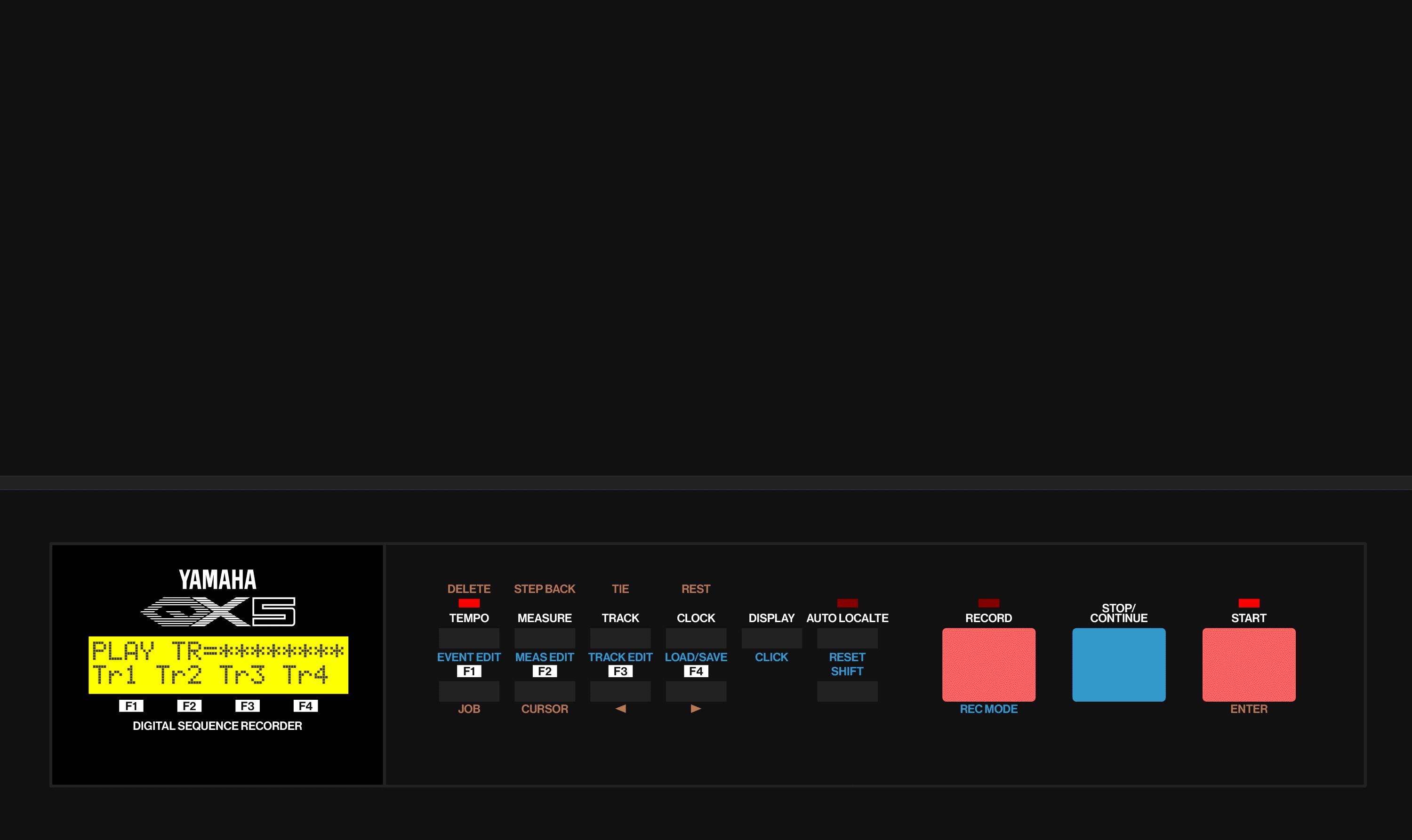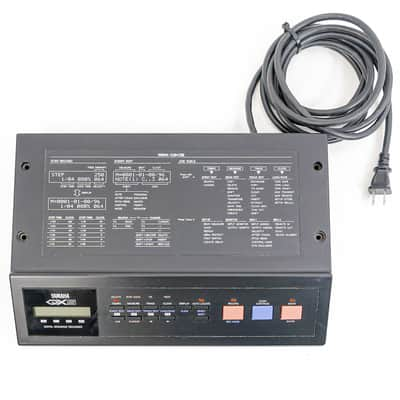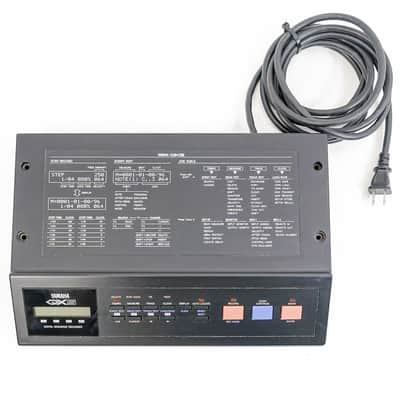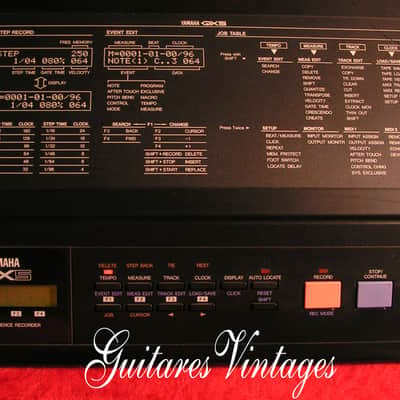1986 (Aug.)
Initially sold for ¥69,800
Compact yet extremely powerful, the QX5 features 8 independent tracks which can each hold up to 16 MIDI channels of recorded music, performance, and system exclusive data.
It's possible to record in real-time or step write modes with full auto-locate and punch-in capability. 32 "macros" allow storage of segments which can later be assembled to form a complete composition.
Any information recorded can be later manually changed with fine detail. Overall, the functions available are perfectly adequate for a home user or small studio.
It was designed as a complementary box to the TX7 synth module. The same design is also shared by the cheaper end of Yamaha's sequencers: the QX21 and QX7. An upgrade called QX5fd was later avalable that added a 3.5" floppy disk drive.
Features
- Tracks & Macros: 8 tracks and 32 macros give you great versatility in your composing and arranging.
- Memory Capacity: you can record approximately 20,000 notes (15,000 when recording velocity data). Recording controller data (Aftertouch, etc.) will also use memory.
- Relative Tempo: tempo changes can be inserted at any point.
- 3 Position Memories: three measure positions can be stored and jumped to at the touch of a switch.
- Auto locate: recording and playback can be set to automatically begin from a certain measure.
- Punch In/Out Recording: you can set recording to begin and end at specified measures.
- Step Recording: a MIDI keyboard and the QX5FD panel switches can be used to enter complex phrases note by note.
- Unlimited Editing: recorded data can be edited by track, measure or event.
- 4 Setup Memories: MIDI reception and transmission conditions and QX5 settings can be set and stored in 4 memories for instant recall.
- MIDI re-channelizing: each incoming and outgoing channel of MIDI messages can be independently re-assigned to a different channel.
- Tape Sync: an FSK tape sync signal can be recorded on tape to synchronize the QX5FD with a multitrack recorder.
- Backlit LCD: the two-line 16-character LCD is backlit for easy visibility even in dim lighting.
- Tape or MIDI Save/Load: sequence data can be saved to and loaded from a data casssette tape or a MIDI data managing service.




